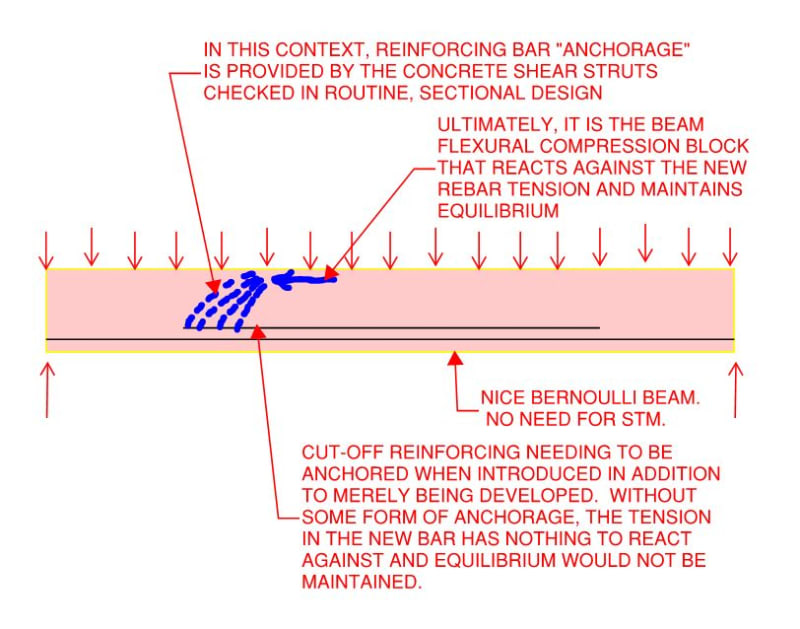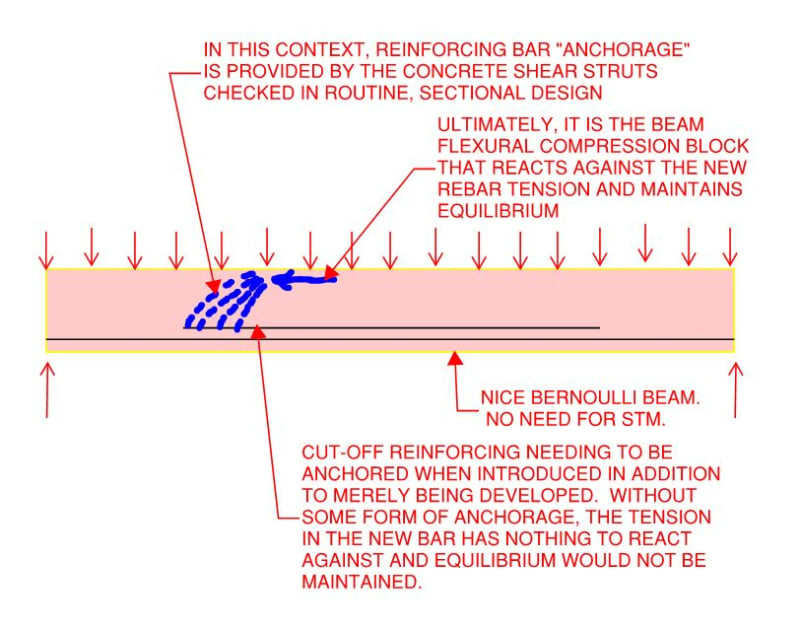Firstly, I'm only loosely familiar with Eurocode presentation on anchorage/development so you may have to assist me by pointing me to what I might need to see.
OP said:
In the EC-2, the anchorage length is the length that a reinforcement needs for the stress to be transferred safely to concrete (ie: without failure of the bond)...so... what's the difference?
Let's parse that.
OP said:
...without failure of the bond
1) This is precisely what development means in North American codes. No radial splitting and the bar doesn't slide out of the cylindrical hole into which it is embedded prior to reaching its yield strength. This does not preclude the possible outcome that the reinforcement rips from the parent concrete, taking a chunky cone of concrete with it even though a pure bond stress failure has been precluded.
OP said:
...the length that a reinforcement needs for the stress to be transferred safely to concrete...
2) In North America, safely transferring reinforcement tension to concrete would involve two, distinct aspects:
a) preventing a bond stress failure as described in #1 and conventionally termed "development length" in North America and;
b) preventing the reinforcement from ripping from the parent concrete without a bond stress failure by taking a chunk of concrete along with it. This is what is termed, or
should be termed "anchorage" in North American codes.
OP said:
People arguing it's different seem to say that the development length takes place in straight-in cuts of rebars, while anchorage happens at ends of members, with bends and hooks
No, that's a misrepresentation of what has been said. It would be more accurate to articulate the perspective as:
1) Development / bond stress limitation is required
everywhere bar force is to be transferred out of a bar and into something else, whether that something else is nearby reinforcing or nearby concrete.
2) When bar tension is transferred from one group of reinforcing to another via a code compliant lap splice, no separate check for anchorage is required.
3) When bar tension is transferred from a group of reinforcing to a concrete mass, one of the following is required in addition to development:
a) Anchorage of the reinforcing within a concrete compression strut (most common) or;
b) Anchorage of the reinforcing via embedment into a concrete mass and utilizing the tension capacity of concrete (Eligenhausen stuff).
OP said:
as I said, this sounds nonsense to me, because they are both the same situation: the need for extending the length of a rebar for safely transferring the stress is the same no matter if you are cutting curtailed reinforcements, or if you at at the ends of a member
Correct, in both of those examples, you would require
both of the following, in the North American parlance:
4) Development and;
5) Anchorage. In both of the examples that you mentioned, the anchorage would commonly be the 3a type described above rather than the 3b/Eligenhausen type.



